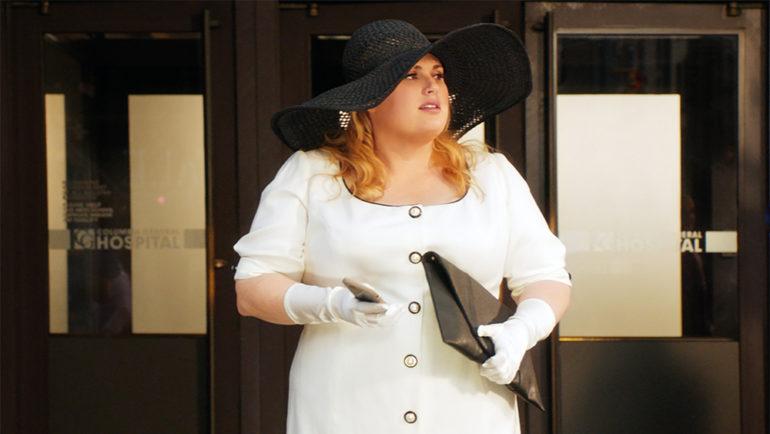The Rom-Com Is Dead. Long Live the Rom-Com (Column)
By Owen Gleiberman
LOS ANGELES (Variety.com) – The romantic comedy as we’ve known it may well be on its last legs. There is now a whole generation that sees through its synthetic stylings and princess fakery — and, more than that, feels fundamentally insulted by them. Yet “Isn’t It Romantic,” the beguiling meta version of a kitschy-koo romantic comedy, proves (among other things) that Rebel Wilson is a total movie star, and it demonstrates how it’s possible to sustain the battle-weary, peeling-paint rom-com form for at least one movie: Skewer it, bury it, throw dirt on it, and resurrect it, all at the same time.
In “Isn’t It Romantic,” Wilson plays an anxious cynic named Natalie who has grown up watching romantic comedies and rejects every one of their bubble-brained lies. She ticks them off for us (the absurdly manicured New York City neighborhoods, the fact that two women in the same office space always have to be mortal enemies), and the film’s pop!-pop!-pop! puncturing of rom-com conventions is drolly satisfying. But it’s not until Natalie gets conked on the head and wakes up in her own fantasy rom-com world, as if the Land of Oz had become a bad Reese Witherspoon movie, that her ability to slice through those conventions lifts the film aloft.
When Liam Hemsworth, as a buffed-to-perfection zillionaire Aussie hunk, looks at Natalie with a light in his eye, she’s in a fairy tale and knows it, but it’s the way she scathingly undercuts everything that’s happening to her that allows the film to take wing. (So does Brandon Scott Jones’ brilliant performance as the gay best friend, a turn so devious that the bitchy wit becomes a parody of itself.) In “Isn’t It Romantic,” isn’t just another tremulous rom-com damsel-kook. She’s closer to Bill Murray in “Ghostbusters,” inside the movie and outside it at the same time. It’s that double vision that gives the audience a tingle.
The rom-com has now been around for 30 years, in its contempo sugar-cookie-with-charm-sprinkles mode, and during that time it has been through three phases. The first one goes back to those heady, puppy-love days when the genre, which had thrived in Old Hollywood, came roaring back on the heels of two movies, both of which became overnight cultural touchstones: “When Harry Met Sally,” released in the summer of 1989, and, one year later, “Pretty Woman.” We might call the first phase of the rom-com the Nora Ephron Honeymoon phase (because it became stratospheric with “Sleepless in Seattle”), and that lasted for about a decade.
It’s not so easy to pinpoint when the second phase set in, though it’s possible to hook it to one film: “Miss Congeniality” (2000), a Sandra Bullock klutz comedy of staggering popularity. That may be the moment when the rom-com entered its Guilty Pleasure Phase, or maybe we should call it the I’m Watching This at Home With a Pint of Designer Ice Cream Phase, as it now became acceptable, by women, to refer to these movies as “chick flicks,” a term of ownership that reclaimed a certain knowing girlishness as a stance of post-feminist attitude.
That said, the chick-flick-ization of the romantic comedy was an acknowledgement that these movies had now achieved a certain low-camp, low-expectation cookie-cutter utilitarian cheesiness. The conventions, through repetition, had become clichés, which was fine (for decades, how many Westerns coasted by on clichés?).
But there was something paradoxical about a movie that was supposed to leave you with a fresh romantic glow but did so by hitting the same teary soft spots and funny bone of insecurity that the last rom-com did, and the one before it. By the mid-to-late 2000s, when Matthew McConaughey, in ticky-tacky throwaways like “Failure to Launch” (2006) and “Fool’s Gold” (2008), was becoming the (chest-waxed) poster boy for the rom-com’s lack of respectability, and the torch of rom-com queen was passed from Julia Roberts to Kate Hudson, the genre had begun to enter its Postmodern Kitsch Phase, where a woman watching a romantic comedy at home with a pint of designer ice cream was now the opening scene of the movie. The chick flick was eating its own tail.
And by the way, do not call them chick flicks anymore, since that term is now considered unbelievably patronizing. (For the record, I always found it to be, and refused for years to use the term in print. I was finally worn down when I’d simply run out of working metaphors for mediocre cheeseball rom-com.) The generation of moviegoers that rejects the term “chick flick” may be saying, quite rightly: Why would these movies be made just for women? And why would the people who make them, or consume them, want to think of those women as “chicks”? It’s a double insult.
Romance isn’t going anywhere, so why should the romantic comedy? There’s no reason it can’t come bouncing back. But “Isn’t It Romantic” demonstrates that a certain kind of rom-com — the -meets-“Pretty Woman” template, the genre of plastic screwball that rose up in the ’90s — has had its run. If you look back over those 30 years, a tiny scattering of rom-coms stand out as true works of popular art: “My Best Friend’s Wedding,” “Bridesmaids,” “The Big Sick.” If you look, especially, at “Bridesmaids” and “Trainwreck,” two movies produced by Judd Apatow but shaped, creatively, by the force and personality of their respective screenwriter/stars, Kristen Wiig and Amy Schumer, it’s pretty clear what’s going to save the rom-com. It needs to be reimagined by a new generation, and by a more inclusive version of Hollywood — by the Nora Ephrons of the 21st century, working under the guiding hand of the women who become the Judd Apatows of the 21st century. They need to rediscover the form out of life itself. They need to find out what the new comedy of romance is.

